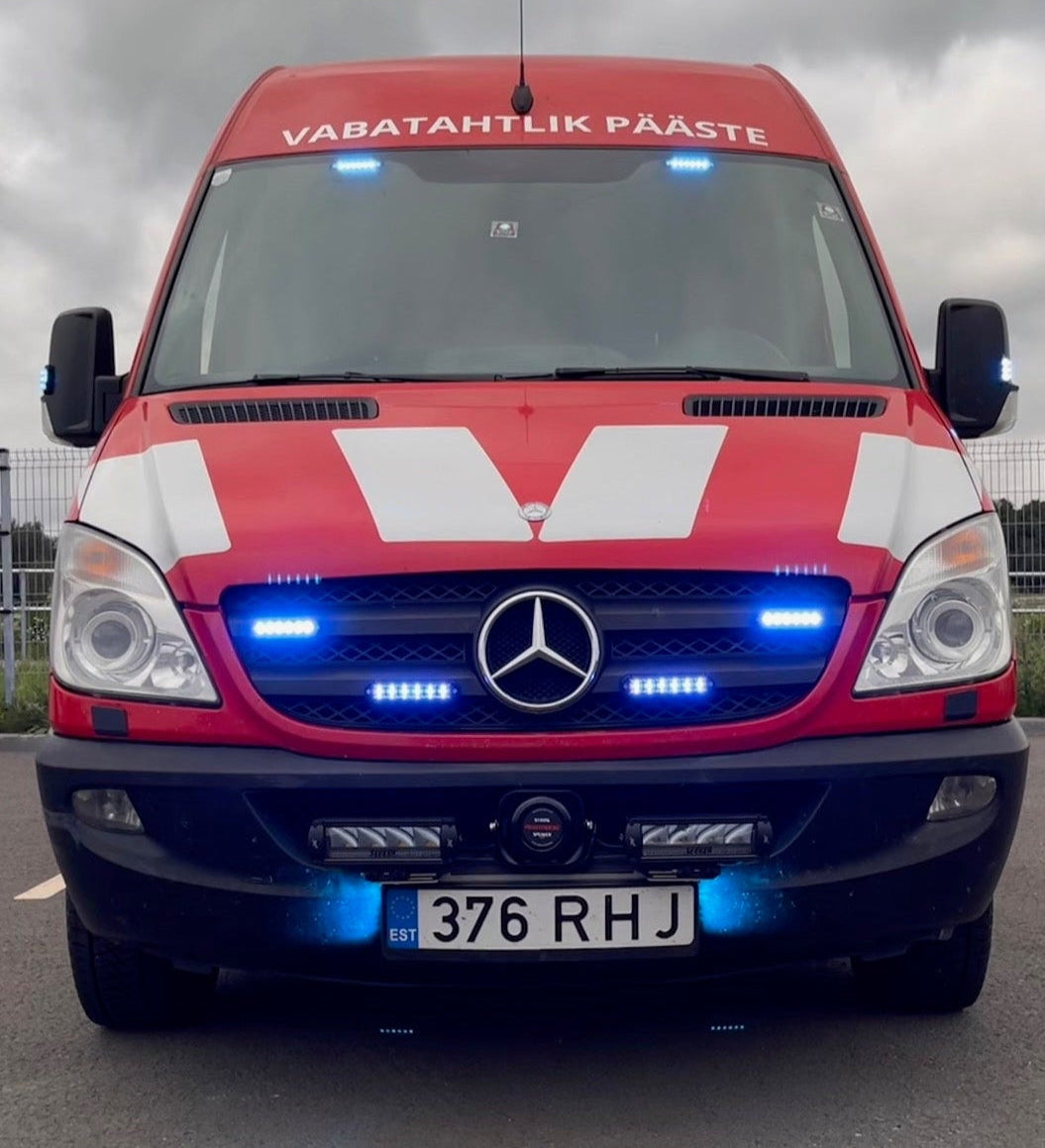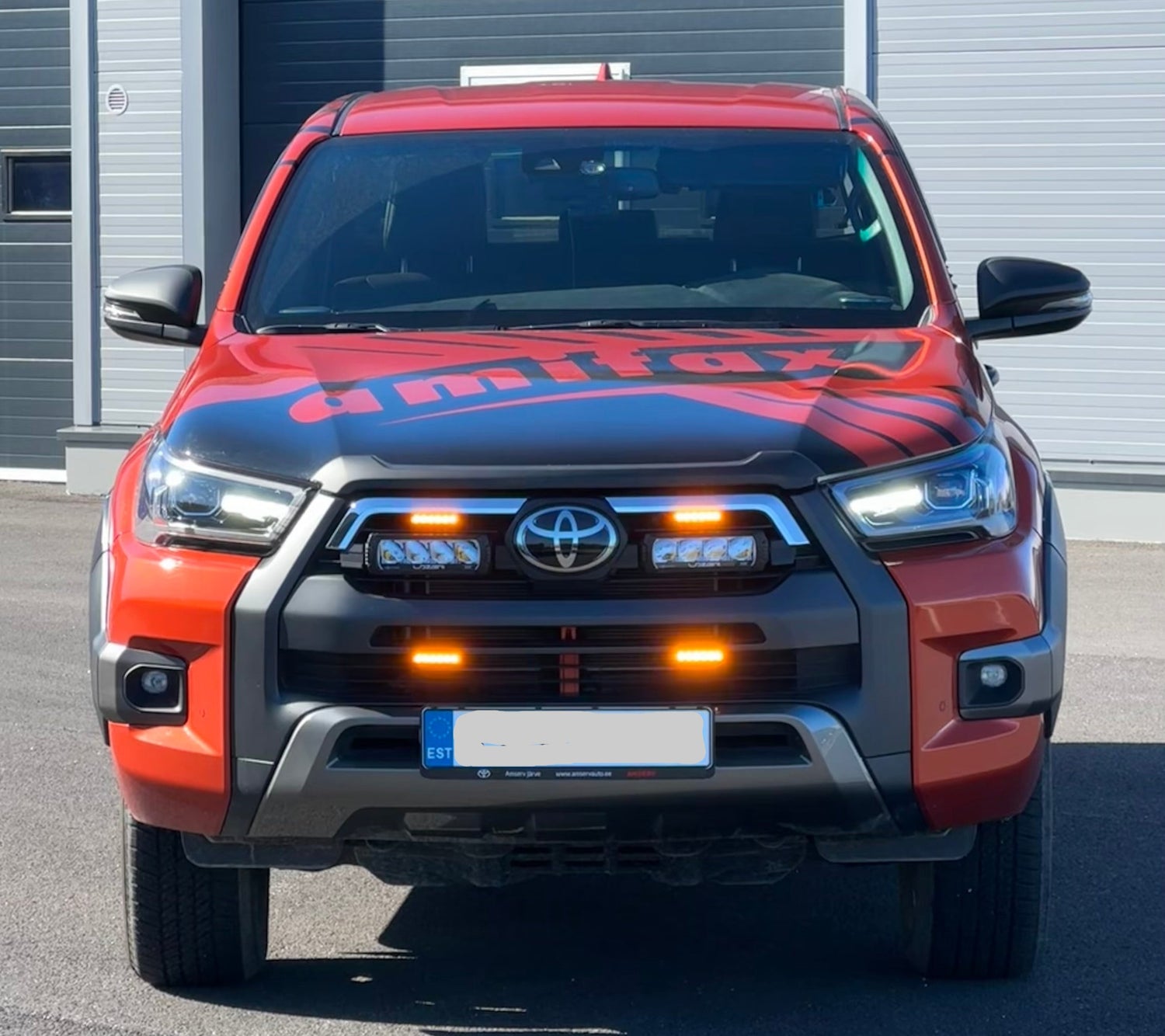Warning light – what is it, where and why to install it?
Warning light (also known as a flasher) is a brightly flashing warning lamp used on vehicles and machines to alert other road users to special situations. Both regular users and professionals – from volunteer rescuers to road builders or farmers – may need a warning light to make their vehicle more visible. Below we explain what a warning light is, where and why to install it, and which products to choose. Additionally, we share installation recommendations and references to practical tips.
Legislation and visibility requirements:
Our flashers, warning lights, and flashing panels used on our roads must have the ECE R65 marking!
ECE R65 is a standard established by the Economic Commission for Europe that regulates warning lights. Compliance with this standard ensures that lights are sufficiently visible, safe, and effective in all traffic and weather conditions.
Main requirements for lights compliant with the ECE R65 standard:
Light intensity:
- Class 1 (night mode): Amber at least 100 cd, blue at least 50 cd.
- Class 2 (night and day mode): Amber at least 230 cd, blue at least 120 cd.
Flash rate: 60–240 flashes per minute to ensure optimal visibility without disturbing rapid flashing.
Light distribution:
- Category T: 360° visibility around the vehicle.
- Category X: Directed light (at about an 80° angle).
- Category HT: Wide light distribution (135°), often at the rear of the vehicle.
Lights compliant with the ECE R65 standard are always marked with the E-mark, confirming their compliance and quality. By choosing flashers that meet the ECE R65 standard, you ensure your vehicle's safety and visibility both day and night.

What is a warning light and what is it used for?
Warning light is a special lighting device that may only be used when performing work tasks. Emergency vehicles (police, ambulance, rescue) have blue flashing lights that are essential – they signal to other drivers that an emergency vehicle is approaching and must be given way. For example, emergency vehicles usually have several blue warning lights to ensure maximum visibility in different directions.

At the same time, construction and maintenance machines as well as utility vehicles (e.g., road maintenance, tow trucks, tractors) use yellow flashing lights to indicate a hazardous or slower vehicle and help ensure better safety for workers. The yellow warning light alerts others that the vehicle is performing special work or poses a potential obstacle, helping to prevent accidents.
Where to install the warning light (flasher) and why?
Marker lights must be installed so that their light is visible as far as possible and in all directions. The choice of installation location depends on the type, shape, and purpose of the vehicle, as well as legal requirements. The main installation location options are:
-
To the roof
The beacon positioned at the highest point is visible from afar and ensures 360° coverage all around. It is a common placement for beacon panels, for example on emergency vehicles and special trucks. If only one roof beacon is used, it should ideally be located on the vehicle's centerline so that the light spreads symmetrically. The beacon panel should be as wide as the vehicle's roof.
-
At the front of the vehicle
LED marker lights installed in Esios improve visibility directly. They are often integrated between the vehicle's front grille. The front marker lights complement the roof beacon or serve as an alternative. For example, many vehicles are equipped with slim yellow LED flashers in the front grille, which make the vehicle visible without a tall flashing panel.
-
At the rear and sides of the vehicle
Warning lights are usually installed on the bumper of the rear section. It is also possible to install them on the doors or sides of some vans. For example, if you want to cover both the sides and the rear of a van, this can be easily solved with a flashing panel. Sometimes this is also cheaper than separate warning lights.

Inside the vehicle cabin (inside the cabin):
Interior-mounted flashers are usually attached to the top of the windshield or near the rear window inside the vehicle. They are a good solution if you do not want an external installation – for example, for covert emergency vehicles or private vehicles. Cabin flashers are often thin and concealed, making them almost unnoticeable from the outside. However, it is important to ensure that the warning light installed inside the cabin is strong enough and positioned at the correct angle to be clearly visible through the glass. Vilkur.eu, for example, uses 3D printing to maximize efficiency.
